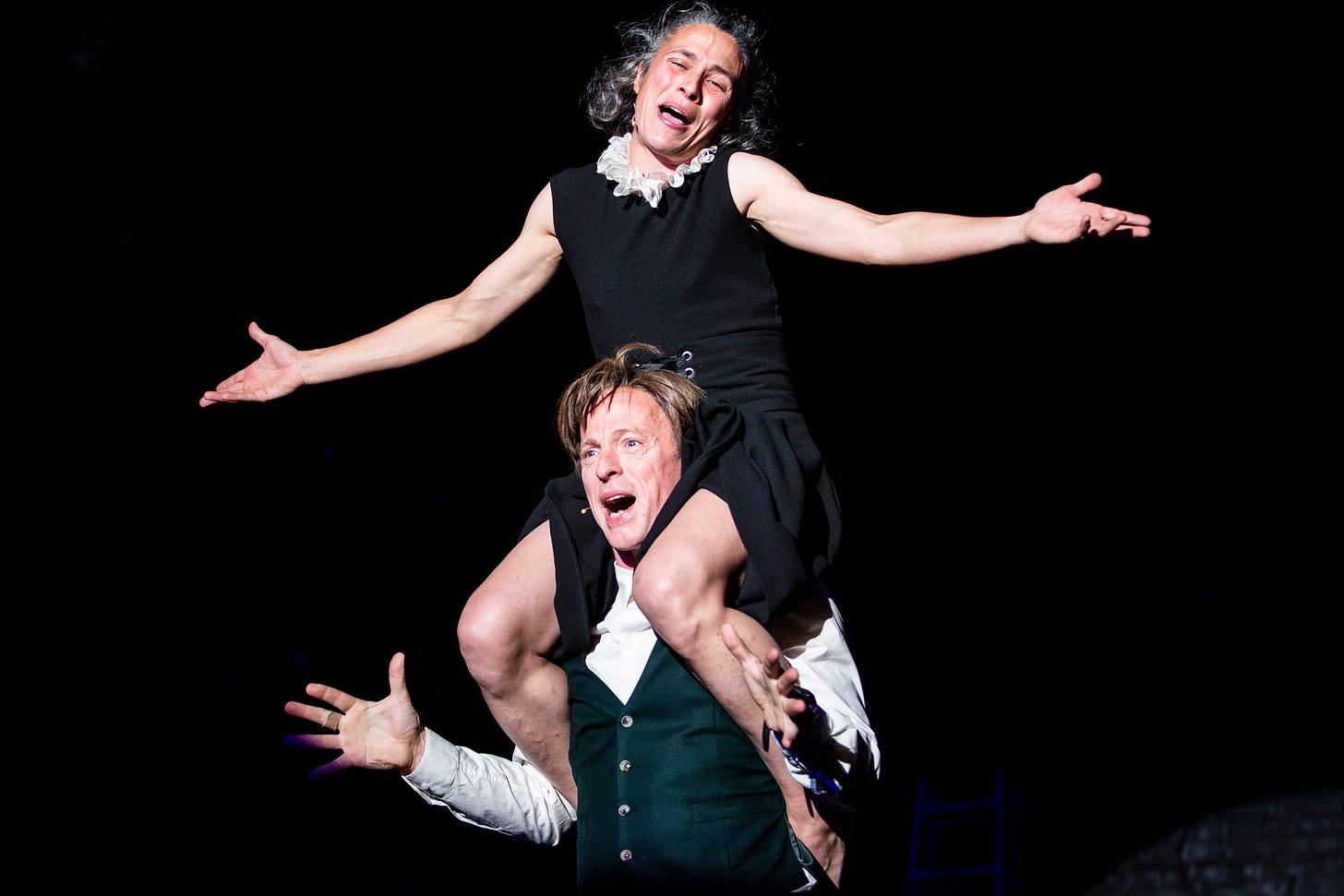How to Be a Dancer: How Michael Keegan-Dolan took the alternative path
A choreographer makes value judgements about his medium in a biographical dance
Gate Theatre, Dublin Theatre Festival
★★☆☆☆
Does dance have a bad rap? It’s easy to see the harsh perceptions out there, how the medium can be viewed as cryptically technical (centuries-old ballets) or overly serious (rebellious contemporary dances). Like any art form, it has its lovers and detractors; fans will go to dances because they know it does something to their brains. Not everyone in the audience is left feeling moved every time.
One possible way of viewing Michael Keegan-Dolan is as a choreographer for people who mightn’t really like dance. Over the years, his large, myth-filled productions often contained as many movement-less theatrical scenes as there were dance scenes. The preference seems to be for bigger, group-movement energy over smaller, detail-orientated combinations (solos, duets, etc). This is dance as choreographically-restrained but still sweepingly epic. Key to the success is an eye for crisp, swooning stage displays – a talking point about Swan Lake/Loch na hEala, a version of the Tchaikovsky classic, was the launching of airborne feathers into the auditorium, rather than a standout memory of a dance gesture. If there have been value judgements about dance buried within Keegan-Dolan’s dances, he is explicit about them in his new biographical work How to Be a Dancer in Seventy-two Thousand Easy Lessons.


